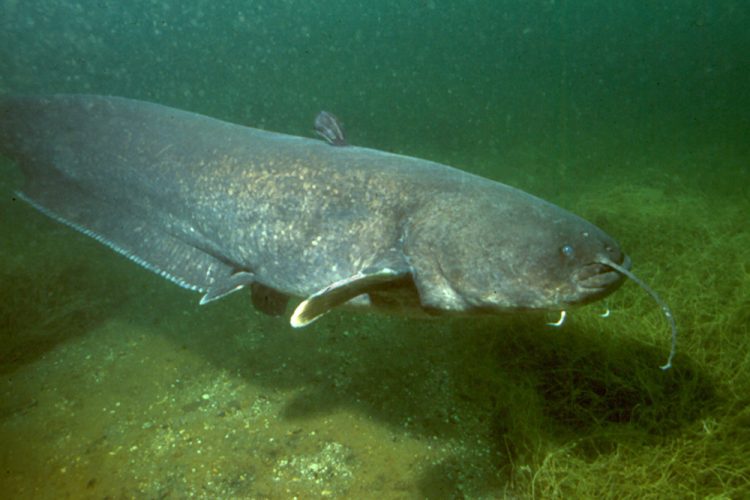Were it to be introduced into North American waters, the wels catfish
could have devastating impacts on native fish and ecosystems.
Guarding Ontario’s Waters
Preventing the Potential Invasion of Wels Catfish
Source: Ontario Ministry of Natural Resources and Forestry
In 2012, the government of Ontario, Canada developed the Ontario Invasive Species Strategic Plan to prevent new invaders from arriving and surviving in the province and to slow, reverse and reduce the spread and harmful impacts of invasive species. One invasive species of extreme concern is the wels catfish native to parts of Europe and Asia.
Though not yet reported in Canada or the United States, the potential introduction of the wels catfish could spell ecological disaster for Ontario’s aquatic habitats. Heralded as one of the largest freshwater fish globally, this species is a formidable predator. Its arrival could reshape the food webs and disrupt the native biodiversity of Ontario’s water bodies.
Favored for sport fishing, this species has spread across Europe, demonstrating remarkable adaptability to various climates and water types. Its penchant for territorialism and preference for specific habitats make it a formidable invader, dominating and outcompeting native species for resources.
The impacts of the wels catfish could be far-reaching. With a voracious appetite for a wide range of prey, including native fish, amphibians, mammals and birds, this invasive species could disrupt Ontario’s fragile aquatic ecosystems if it is released in the province and gains a footholdd. Its prolific reproduction, combined with aggressive protection of young, poses a significant challenge to native species’ survival.
Identifying the wels catfish is crucial. Recognizable by its massive size, reaching lengths exceeding nine feet and weighing up to 330 pounds, this species features distinct physical characteristics: a scaleless body, a large triangular head, a large mouth with small teeth and unique barbels near its jaws.
As guardians of our waterways, catfish anglers should take proactive measures to prevent the establishment of the wels catfish in Ontario and elsewhere. Vigilance is key:
- Use resources such as Wikipedia to educate yourself and others on identifying the wels catfish.
- Refrain from buying or keeping this species, and never release any live specimens into Ontario waters or places where wels catfish are not native.
- Act responsibly: if incidentally caught, destroy the wels catfish—do not return it to the water.
- Report any information regarding the illegal importation, distribution or sale of wels catfish immediately.
- Be vigilant and report sightings of invasive species by calling the toll-free Invading Species Hotline at 800-563-7711.
By remaining vigilant and proactive, anglers can help safeguard Ontario’s waters from the potential devastation wrought by the invasive wels catfish.



